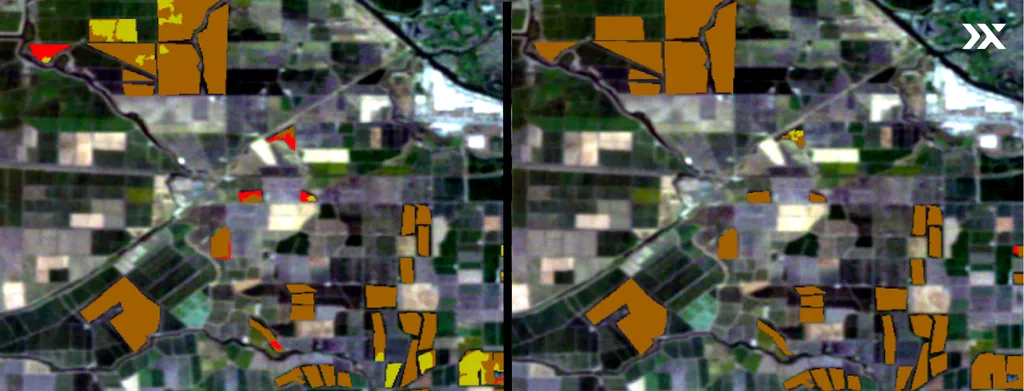In the heart of Greece, a groundbreaking study is reshaping how we approach agricultural crop classification, with implications that could ripple through the energy sector. Georgios Dimitrios Gkologkinas, a researcher from the Department of Applied Informatics at the University of Macedonia, has led a comparative analysis of U-Net architectures, integrating dimensionality reduction strategies to tackle the high dimensionality of hyperspectral imagery. The study, published in the journal *Algorithms* (translated to English), offers a nuanced look at how different machine learning architectures and spectral representations can optimize crop classification, a critical component of precision agriculture.
Hyperspectral imagery, with its vast spectral data, presents both opportunities and challenges. “The inherent high dimensionality of hyperspectral imagery is a double-edged sword,” Gkologkinas explains. “While it offers rich information, it also introduces spectral redundancy, which can hinder model performance.” To address this, Gkologkinas and his team evaluated three U-Net-based architectures—U-Net, U-Net++, and Atrous U-Net—on EnMAP hyperspectral data over the heterogeneous agricultural region of Lake Vegoritida.
The study’s findings are compelling. U-Net++ consistently outperformed its counterparts when the full spectrum or ACS-derived subsets were employed. However, standard U-Net achieved remarkable performance under Linear Discriminant Analysis (LDA) reduction, and Atrous U-Net benefited from SHAP-driven compact representations. “The key takeaway is that model performance is contingent on both the network’s architecture and the features’ space provided by band selection,” Gkologkinas notes.
The implications of this research extend beyond agriculture. In the energy sector, where land use and crop management are increasingly intertwined with bioenergy production, accurate crop classification can inform sustainable practices and optimize resource allocation. For instance, understanding crop types and health can aid in the efficient use of agricultural land for biofuel production, reducing the carbon footprint and enhancing energy sustainability.
Moreover, the study highlights the potential of compact, interpretable pipelines for scalable and operational precision agriculture. Band selection methods such as ACS and SHAP substantially reduce spectral dimensionality without sacrificing accuracy, with the U-Net++–ACS configuration delivering the highest F1-score of 0.77. This efficiency is crucial for real-world applications, where computational resources and time are often limited.
As the world grapples with climate change and the need for sustainable energy solutions, research like Gkologkinas’s offers a beacon of hope. By optimizing crop classification techniques, we can pave the way for more efficient, sustainable, and scalable agricultural practices. “This research underscores the importance of joint optimization of architecture and spectral representation,” Gkologkinas concludes. “It’s a step towards making precision agriculture more accessible and effective.”
In the broader context, this study could shape future developments in the field by encouraging the integration of advanced machine learning techniques with spectral data analysis. As we move towards a future where technology and agriculture are increasingly intertwined, such innovations will be crucial in driving progress and sustainability.

